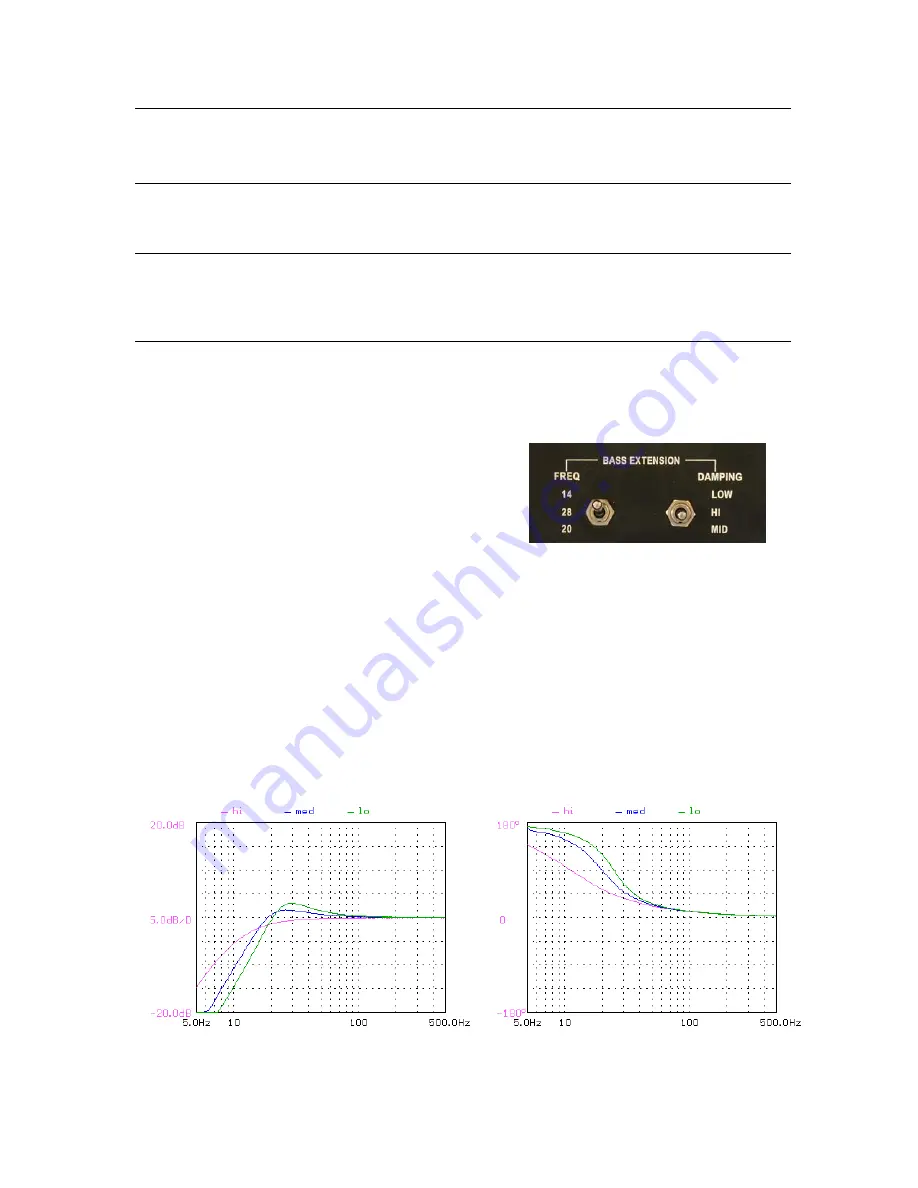
High Level out
Speaker level outputs to drive satellite speakers when one uses the
speaker level inputs.
It is not recommended
to use these outputs
Frequency Control
(Extension Filter)
This controls the frequency of the extension (or rumble) filter. Three
positions are available: 14hz, 20hz, and 28hz. The damping factor (or
inverse of Q value) can be controlled separately (see below).
Damping Control
(Extension Filter)
This controls the damping factor of the extension filter. Three
positions are available: low, medium, and high. Combined with 3
positions in the frequency control, there are a total of 9
combinations.
Extension (or rumble) Filter
Two toggle switches beneath the binding posts constitute the
extension filter controls: one controls the frequency (14,20,and
28) while the other controls the damping factor (inverse of Q
value). These switches control the frequency response contour
in the lower bass band. They serve three purposes: 1) limit the
excursion when excessive rumble signal is present in the input
(with high damping setting), 2) reduce “room gain” if it
becomes noticeable (with high damping setting), and 3) minor boost at the lower end to further extend the
bass extension (with med and low damping settings). 3) is mostly recommended for vented box or large
sealed box. For small sealed box (2cu ft or smaller), we recommend Linkwitz Transform circuit board that
we offer.
“Room gain” is the boost of signal energy in the bass band inside a close room due to heavy wall
reflections. Excessive room gain can blur the bass or change the spectral balance of sound. High damping
setting can be used to reduce its impact. It is a Bessel filter with Q=0.6.
On the other hand, small vented box has a tendency of premature roll-off. To compensate that, we provide
med damping (1.5db boost) and low damping (3db boost).
Graph
: The frequency response when the frequency setting is at 20hz is shown in Figure 1 for 3 different
Fig 2
Phase response of Fig 11
Fig 1
3 damping settings at 20hz






















